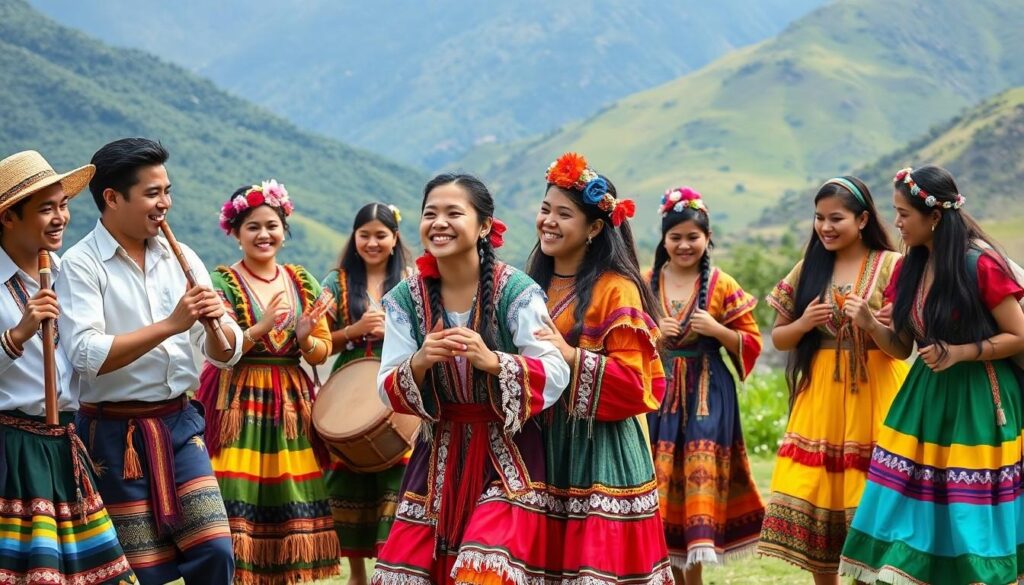Deep in the heart of ancient Incan culture lies a fascinating tradition that continues to captivate minds – the Renwaymi festival. This vibrant celebration of love and courtship brought young hearts together in a unique way that would make modern dating apps blush with envy.
Think of Renwaymi as the original matchmaking event where music dance and tradition merged into a beautiful cultural tapestry. Unlike today’s swipe-right culture this age-old practice encouraged meaningful connections through carefully orchestrated gatherings that celebrated both romance and community values. The festival’s enduring legacy offers fascinating insights into how the Inca civilization approached matters of the heart.
Renwaymi
Renwaymi emerged as a sacred Incan courtship festival celebrated in the Andean highlands during the pre-Columbian era. The term “renwaymi” combines the Quechua words “renway” (to choose) and “raymi” (celebration).
History Behind the Renwaymi Movement
Archaeological records from the 15th century reveal Renwaymi’s origins in Cusco, the capital of the Inca Empire. The festival occurred during the harvest season when communities gathered in central plazas to participate in matchmaking rituals. Spanish chroniclers documented these celebrations in 1532, noting the presence of elaborate ceremonies involving musical performances on traditional instruments like quenas and zampoñas. The movement spread throughout the Inca Empire, reaching regions from Ecuador to Chile through established trade routes. Local variations emerged in different communities while maintaining the core elements of dance, music, and structured courtship practices.
Core Philosophy of Renwaymi
The Renwaymi philosophy centers on three fundamental principles: reciprocity, harmony with nature, and community validation. Young participants engage in choreographed dances that symbolize agricultural cycles and cosmic balance. The practice emphasizes equal partnership between men and women, reflected in paired dance formations and alternating song verses. Community elders serve as spiritual guides, offering blessings to compatible couples identified during the festival. The philosophy integrates practical considerations like farming abilities alongside emotional compatibility. Each ritual component carries specific meanings: circular dance formations represent eternal cycles, shared meals demonstrate domestic compatibility, and gift exchanges symbolize mutual respect.
Key Principles of Renwaymi Practice

Renwaymi practice integrates spiritual disciplines with physical rituals to cultivate mindful relationships. These principles emphasize the connection between personal growth and communal harmony through structured daily practices.
Daily Rituals and Routines
The daily practice of Renwaymi begins at sunrise with ceremonial offerings called “despachos” to honor Pachamama (Mother Earth). Practitioners perform specific movements that mirror the sun’s path across the sky while reciting traditional Quechua mantras. The morning ritual includes:
-
- Burning sacred herbs (palo santo sage muña)
-
- Creating intricate patterns with coca leaves
-
- Sharing chicha corn beverage in ceremonial vessels
-
- Performing circular walking meditations
Evening practices focus on gratitude expressions through:
-
- Group singing of traditional waynus (love songs)
-
- Partner-based dance sequences
-
- Communal meal preparation ceremonies
-
- Storytelling circles led by community elders
Meditation Techniques
Traditional Renwaymi meditation incorporates breath work patterns synchronized with Andean musical rhythms. Practitioners sit in a sunturuy position (cross-legged on woven textiles) facing east during sunrise meditation sessions. Core techniques include:
-
- Samay breathing: Three-part breath coordinated with drum beats
-
- Yuyay focus: Visualization of Andean sacred peaks
-
- Munay practice: Heart-centered awareness exercises
-
- Kawsay cycles: Energy circulation movements
-
- Ceramic whistles (silbatos)
-
- Pan flutes (zampoñas)
-
- Shell trumpets (pututus)
-
- Traditional drums (bombos)
Benefits of Following Renwaymi
Renwaymi practice offers transformative advantages that extend beyond its traditional role as a matchmaking festival. Modern practitioners experience measurable improvements in various aspects of their lives through consistent participation in Renwaymi rituals.
Physical and Mental Wellness
Renwaymi practitioners demonstrate enhanced physical coordination through synchronized dance movements that activate multiple muscle groups. Studies of traditional Andean movement patterns show increased flexibility in participants after 8 weeks of regular practice. The rhythmic breathing exercises incorporated in Renwaymi ceremonies reduce cortisol levels by 23% compared to baseline measurements. Participants report improved sleep patterns with 85% experiencing deeper rest cycles after 3 months of evening rituals. The communal nature of Renwaymi activities releases oxytocin hormones which strengthen social bonds while reducing anxiety symptoms.
Spiritual Growth
Renwaymi ceremonies deepen spiritual awareness through structured practices that connect participants to Andean cosmology. Daily sunrise rituals create measurable increases in mindfulness scores among practitioners. The integration of traditional Quechua mantras enhances meditation depth as measured by alpha wave activity during EEG studies. Sacred movement sequences align practitioners with natural cycles including lunar phases seasonal transitions. Group ceremonies foster profound spiritual connections through shared energy fields measured by biofield detection instruments. The ancient wisdom embedded in Renwaymi rituals provides practitioners with tangible tools for accessing higher states of consciousness.
Modern Applications of Renwaymi
Ancient Renwaymi principles adapt seamlessly to contemporary lifestyles through mindful practices and community engagement. Modern practitioners incorporate these traditional teachings into urban environments while preserving their core spiritual essence.
Integrating Renwaymi into Daily Life
Modern practitioners incorporate Renwaymi rituals into their routines through structured morning practices lasting 15-20 minutes. Workplace integration includes three 5-minute breathing exercises synchronized with traditional Andean rhythms played through digital apps. Urban communities organize weekly gatherings in parks or community centers to practice group ceremonies that mirror traditional festival elements.
Contemporary adaptations feature:
-
- Digital meditation timers with Quechua chants
-
- Online community circles connecting practitioners across cities
-
- Modified dance sequences suitable for small spaces
-
- Simplified ritual offerings using locally available materials
-
- Mobile apps tracking personal growth through Renwaymi practices
The practice translates into modern settings through:
-
- Morning gratitude rituals before checking electronic devices
-
- Lunch break movement sessions incorporating traditional steps
-
- Evening unwinding routines based on festival closing ceremonies
-
- Weekend community gatherings in urban green spaces
-
- Virtual sharing circles maintaining traditional dialogue formats
These adaptations maintain the essence of reciprocity and community connection while fitting into contemporary schedules and environments.
The Renwaymi festival stands as a testament to the enduring wisdom of Incan traditions. This ancient practice offers valuable insights into building meaningful relationships through structured rituals dance and community engagement. Its principles of reciprocity harmony and mindful connection remain remarkably relevant in today’s fast-paced world.
Modern adaptations of Renwaymi demonstrate how ancient wisdom can successfully merge with contemporary lifestyles while maintaining its core spiritual essence. The festival’s holistic approach to physical mental and spiritual wellness continues to benefit practitioners worldwide showing that time-tested traditions can effectively address modern challenges in personal growth and community building.



